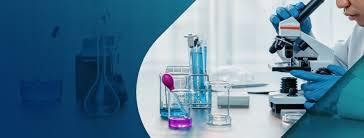In the intricate world of pharmaceuticals, every molecule tells a story, and within that narrative lies the presence of impurities. While impurities may seem like minor players in the grand scheme of drug development, their significance cannot be overstated. In this blog post, we delve deep into the realm of impurities profiling, uncovering its importance, and shedding light on why it serves as the cornerstone of pharmaceutical development.
Understanding Impurities Profiling:
Impurities profiling involves the comprehensive analysis of a drug substance or product to identify and quantify impurities present at various stages of development. These impurities can originate from a multitude of sources, including raw materials, reagents, intermediates, or degradation processes. By meticulously scrutinizing these impurities, researchers gain invaluable insights into the chemical composition and stability of pharmaceutical formulations.
Ensuring Safety and Efficacy:
One of the primary objectives of impurities profiling is to ensure the safety and efficacy of pharmaceutical products. Even minute quantities of impurities can exert profound effects on the pharmacological properties of a drug, potentially compromising patient safety. Through rigorous analysis and characterization, impurities profiling enables researchers to mitigate risks associated with impurity-related toxicity, ensuring that the final product meets stringent regulatory standards.
Optimizing Formulation and Manufacturing Processes:
Impurities profiling also plays a pivotal role in optimizing formulation and manufacturing processes. By identifying potential impurity sources and understanding their impact on product quality, researchers can make informed decisions regarding raw materials, synthesis routes, and process parameters. This proactive approach not only enhances product purity but also streamlines manufacturing operations, ultimately reducing costs and time-to-market.
Facilitating Regulatory Compliance:
In the highly regulated pharmaceutical industry, compliance with regulatory guidelines is non-negotiable. Impurities profiling serves as a crucial tool in demonstrating the quality, safety, and efficacy of pharmaceutical products to regulatory authorities. By providing comprehensive data on impurity profiles and control strategies, companies can expedite the approval process and navigate regulatory hurdles with confidence.
Driving Innovation and Continuous Improvement:
Beyond regulatory requirements, impurities profiling fosters a culture of innovation and continuous improvement within pharmaceutical development. By continually refining analytical techniques and expanding our understanding of impurity behaviors, researchers pave the way for the development of safer, more efficacious drugs. Furthermore, proactive impurity management strategies enable companies to anticipate and address emerging challenges, driving excellence across the entire product lifecycle.
Conclusion:
In conclusion, impurities profiling stands as a linchpin in the landscape of pharmaceutical development, guiding researchers towards safer, more effective therapies. By unraveling the mysteries of impurity chemistry, we empower ourselves to create products that not only meet regulatory standards but also exceed patient expectations. As we continue to unlock the importance of impurities profiling, we embark on a journey towards a brighter, healthier future for all.
What is an impure substance? What are some examples?
What is the sources of impurities and their control?
